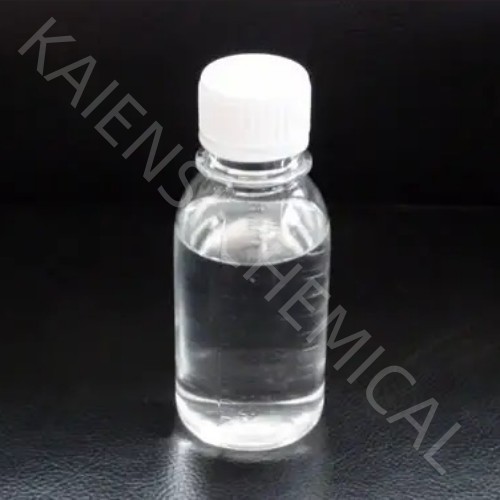CN-171
CN-171
CN-171 is a bifunctional organic carbonate with a complex group and a degradable inorganic triethoxysilyl group. This double bond structure gives CN-171 special properties: it can organically bond inorganic materials (such as glass, metals, fillers, etc.) with organic polymer materials (such as thermal solids, thermoplastics, and elastomers) Together, it helps to promote the action of accelerators and surface modifiers.
It is a colorless, low-viscosity liquid with a typical aromatic odor.
| TECHNICAL DATA SHEET | ||||
| Product Name: | Vinyl trimethoxysilane | |||
| CAS No.: | 2768-02-7 | |||
| Structural formula: | C5H12O3Si | |||
 | ||||
| Characteristic: | CN-171 is a bifunctional organic carbonate with a complex | |||
group and a degradable inorganic triethoxysilyl group. This double bond structure gives CN-171 special properties: it can organically bond inorganic materials (such as glass, metals, fillers, etc.) with organic polymer materials (such as thermal solids, thermoplastics, and elastomers) Together, it helps to promote the action of accelerators and surface modifiers. It is a colorless, low-viscosity liquid with a typical aromatic odor. | ||||
| ITEM | Data | |||
| Appearance | Colorless transparent liquid | |||
| Purity | ≥99.0% | |||
| Density 20℃g/ml | 0.9650-0.9750 | |||
| Refractive Index (25℃) | 1.3880-1.3980 | |||
Pakaging: 5L,10L,25L,200L,1000L | ||||
Reaction properties CN-171 in the presence of water vapor, its methoxy groups will be hydrolyzed to produce methanol and active silanol groups, can form a bond with various inorganic substrates, or these groups form silicon-oxygen bonds. Under the action of a suitable peroxide initiator, its organic vinyl end will also react with a suitable polymer. | ||||
Storage conditions: After the container is opened, it should be sealed to prevent water vapor from entering to produce hydrolysis.Stored in the original unopened container at room temperature, this product has a shelf life of one year from the date of production, and expired products are tested. After passing, the buyer decides whether to continue to use it. | ||||
Use: CN-171 is suitable for moisture-curing polymer materials such as polyethylene. This process is characterized by vinyl silane grafting with polymer materials through peroxide initiation during extrusion. After the grafting reaction, the high molecular polymer can still be subjected to thermoplastic treatment. Only through water vapor treatment (80~100 ℃ water bath, steam bath or even under environmental conditions), the polymer chain will crosslink to form a crosslinked polymer. The reaction can also be accelerated by using a catalyst. Silane cross-linked polyethylene is widely used in low-voltage cable insulation and jackets. It is also used in hot water or drinking water pipes, including floor heating pipes. Heat resistance is the main reason why cross-linked polymer materials are used in cables and pipes; not only that, cross-linking can also improve the following properties: tensile and breaking strength, chemical resistance, scratch resistance and memory effect. CN-171 can also be used as a comonomer for the synthesis of various high molecular polymers, such as polyethylene and polyacrylic acid. The adhesion of the polymer thus synthesized to the inorganic surface is improved, and at the same time, it can also be cross-linked under the action of water vapor as described above. The polymer system modified by CN-171 (for example, styrene acrylate) shows good adhesion strength and wet scrub resistance under wet environment. CN-171 as a dehumidifier CN-171 can react quickly with water, and even a small amount of water can be reacted by CN-171. This effect is widely used in the sealant industry. Other applications of CN-171 CN-171 is very easy to bond with the hydroxyl group, so it can be used to modify the polymer containing hydroxyl groups, such as functional silicone, so as to introduce reactive vinyl functional groups into the polymer chain. The vinyl group of CN-171 is very active due to its proximity to silicon atoms, making it an ideal reagent for various organic synthesis reactions. | ||||
INQUIRY
Categories
LATEST NEWS
CONTACT US
Contact: Mrs.Cindy
Phone: +86 15254267723
E-mail: sales@knschem.com
Whatsapp:-
Add: Rm1010,Bldg.10, No.5 Tianxiang International, Huangdao Dist.,Qingdao City, Shandong Province, China.

